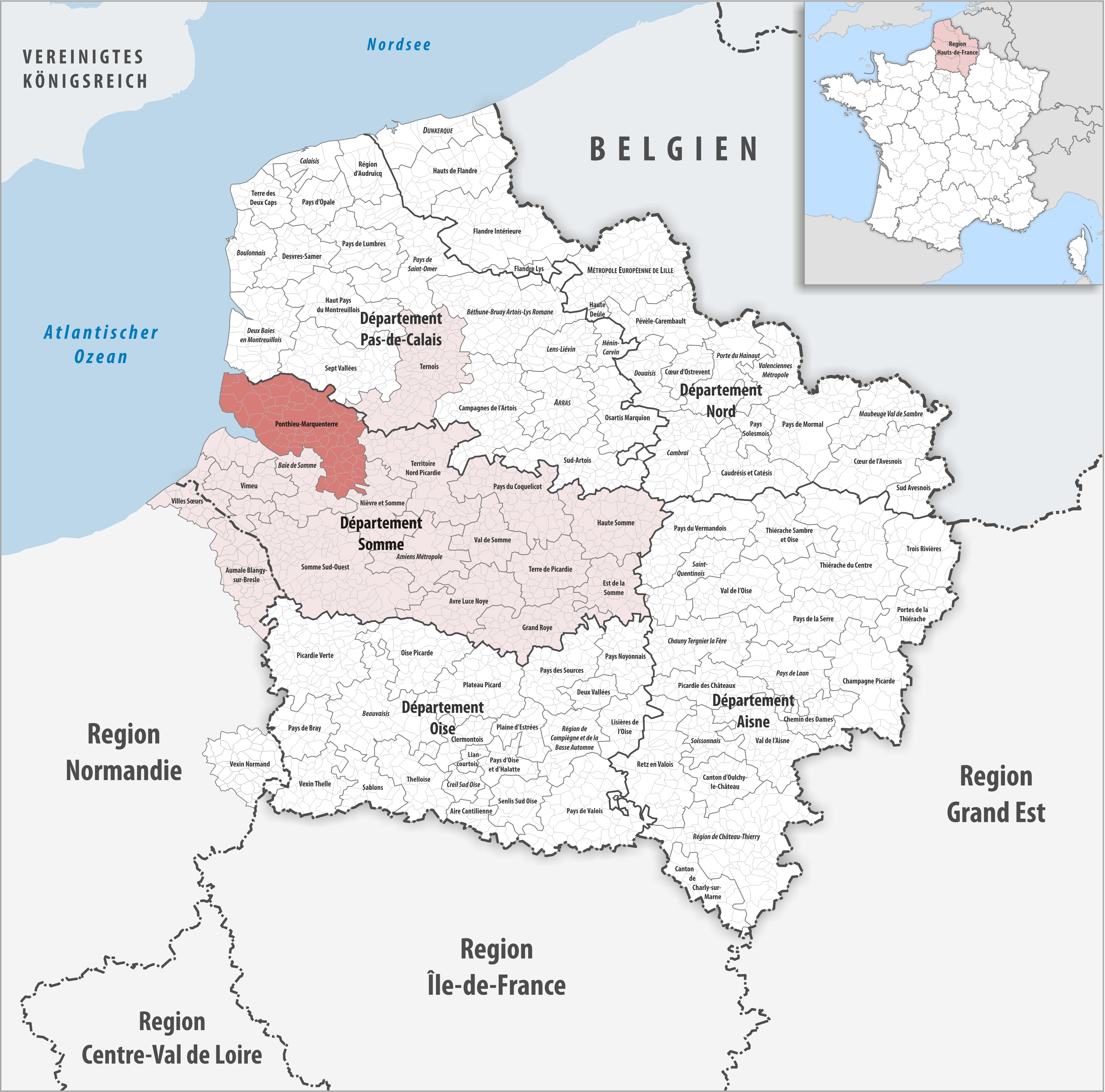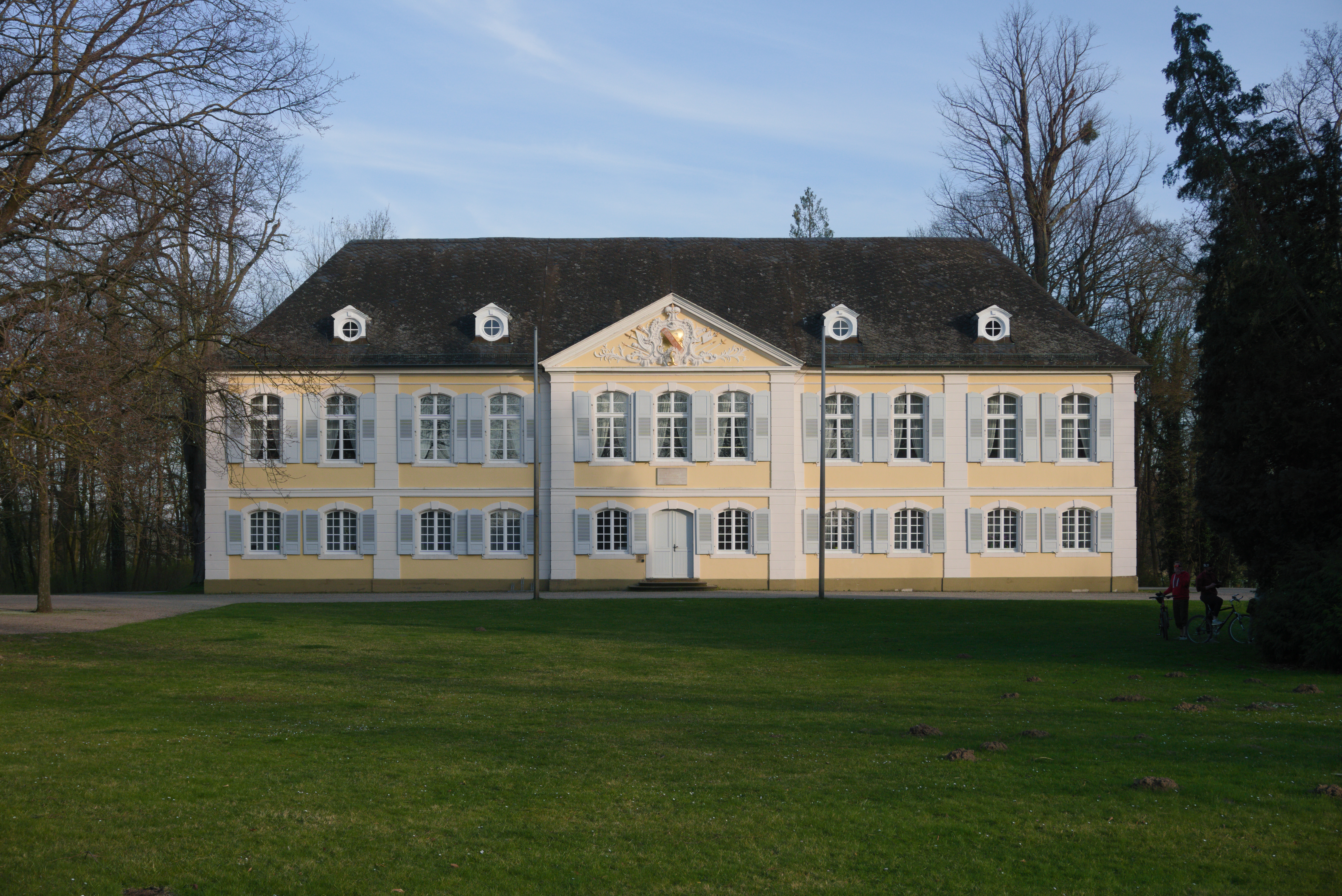|
Saint-Riquier
Saint-Riquier (; ) is a commune in the Somme department in Hauts-de-France in northern France. Geography The commune is situated northeast of Abbeville, on the D925 and D32 crossroads. Abbey Saint-Riquier (originally ''Centula'' or ''Centulum'') gained fame for its abbey, founded about 625 by Riquier (Richarius), son of the governor of the town, when the town was within Austrasia in the Merovingian Kingdom. It was enriched by King Dagobert I and prospered in the early 9th century Carolingian Empire under the abbacy of Angilbert, son-in-law of Charlemagne. In the year 881 Northmen burned the abbey and destroyed much of what was Centula. The monastery was rebuilt in the Middle Ages on a smaller scale. The abbey was part of the diocese of Amiens in Ponthieu. The early counts of Ponthieu originally were styled ''advocatus'' of the abbey of Saint Riquier and "castellan" of Abbeville. The counts of Ponthieu enrolled their younger sons who were going into religious vocations ... [...More Info...] [...Related Items...] OR: [Wikipedia] [Google] [Baidu] |
Abbeville
Abbeville (; ; ) is a commune in the Somme department and in Hauts-de-France region in northern France. It is the of one of the arrondissements of Somme. Located on the river Somme, it was the capital of Ponthieu. Geography Location Abbeville is located on the river Somme, from its modern mouth in the English Channel. The majority of the town is located on the east bank of the Somme, as well as on an island. It is located at the head of the Abbeville Canal, and is northwest of Amiens and approximately from Paris. It is also as the crow flies from the and the English Channel. In the medieval period, it was the lowest crossing point on the Somme and it was nearby that Edward III's army crossed shortly before the Battle of Crécy in 1346. Just halfway between Rouen and Lille, it is the historical capital of the County of Ponthieu and maritime Picardy. Quarters, hamlets and localities *Émonville Park takes its name from one of its owners Arthur Foulc d'Émonvil ... [...More Info...] [...Related Items...] OR: [Wikipedia] [Google] [Baidu] |
Richarius
Richarius of Celles (; ; – April 26, 645 AD) was a Frankish hermit, monk, and the founder of two monasteries. He is venerated as a saint in the Catholic and Eastern Orthodox Churches. Life Riquier's ''vita'' was probably written at the end of the 7th century AD. Shortly after 800 it was revised by Alcuin at the request of Abbot Angilibert, who dedicated his work to Charlemagne. Richarius was born a pagan in the late 6th century in the county of Ponthieu near Amiens in Picardy in the north of Francia. According to the ''vita'' written by Alcuin, Richarius gave shelter to two Welsh missionaries, Caidocus and Frechorius, who were treated with great hostility by the local people who blamed the strangers for crop failure. Because he "welcomed God in the persons of the travelers... this was why he was granted God's mercy." Richarius converted to Christianity under their influence. After his conversion, he fasted on barley bread mixed with ashes, and drank only water. ... [...More Info...] [...Related Items...] OR: [Wikipedia] [Google] [Baidu] |
Bishop Of Amiens
The Diocese of Amiens (Latin: ''Dioecesis Ambianensis''; French: ''Diocèse d'Amiens'') is a Latin Church diocese of the Catholic Church in France. The diocese comprises the department of Somme, of which the city of Amiens is the capital. In 2022 it was estimated that there was one priest for every 6,916 Catholics in the diocese. History The diocese of Amiens was a suffragan of the Archdiocese of Reims during the old regime; it was made subordinate to the diocese of Paris under the Concordat of 1801, from 1802 to 1822; and then in 1822 it became a suffragan of Reims again. Louis Duchesne denies any value to the legend of two Saints Firmin, honoured on the first and twenty-fifth of September, as the first and third Bishops of Amiens. The legend is of the 8th century and incoherent. Regardless of whether a St. Firmin, native of Pampeluna, was martyred during the Diocletianic Persecution, it is certain that the first bishop known to history is St. Eulogius, who defended the d ... [...More Info...] [...Related Items...] OR: [Wikipedia] [Google] [Baidu] |
Angilbert
Angilbert, Count of Ponthieu ( – 18 February 814) was a noble Franks, Frankish poet who was educated under Alcuin and served Charlemagne as a secretary, diplomat, and son-in-law. He is venerated as a pre-Congregation saint and is still honored on the day of his death, 18 February. Life Angilbert seems to have been brought up at the court of Charlemagne at the palace school in :de:Aquae Granni, Aquae Granni (Aachen). He was educated there as the pupil and then-friend of the great English scholar Alcuin. When Charlemagne sent his young son Pepin of Italy, Pepin to Italy as King of the Lombards, Angilbert went along as ''primicerius palatii'', a high administrator of the satellite court. As the friend and adviser of Pepin, he assisted for a while in the government of Italy. Angilbert delivered the document on Byzantine Iconoclasm, Iconoclasm from the Frankish Synod of Frankfurt to Pope Adrian I, and was later sent on three important embassies to the pope, in 792, 794, and ... [...More Info...] [...Related Items...] OR: [Wikipedia] [Google] [Baidu] |
Flamboyant
Flamboyant () is a lavishly-decorated style of Gothic architecture that appeared in France and Spain in the 15th century, and lasted until the mid-sixteenth century and the beginning of the Renaissance.Encyclopedia Britannica, "Flamboyant style" (by subscription), accessed April 2024 Elaborate stone tracery covered both the exterior and the interior. Windows were decorated with a characteristic s-shaped curve. Masonry wall space was reduced further as windows grew even larger. Major examples included the northern spire of Chartres Cathedral, Trinity Abbey, Vendôme, Trinity Abbey, Vendôme, and Burgos Cathedral and Segovia Cathedral in Spain. It was gradually replaced by Renaissance architecture in the 16th century. The Period French scholars define Flamboyant as the fourth phase of Gothic style, preceded by Primary Gothic, Classic Gothic and Rayonnant Gothic. British and American historians describe it as a period of Late Gothic architecture, following Early Gothic architectu ... [...More Info...] [...Related Items...] OR: [Wikipedia] [Google] [Baidu] |
Communes Of The Somme Department
The following is a list of the 771 communes of the Somme department of France. The communes cooperate in the following intercommunalities (as of 2025):Périmètre des groupements en 2025 BANATIC. Accessed 28 May 2025. * * Communauté d'agglomération de la Baie de Somme * [...More Info...] [...Related Items...] OR: [Wikipedia] [Google] [Baidu] |
Communauté De Communes Ponthieu-Marquenterre
The Communauté de communes Ponthieu-Marquenterre is a '' communauté de communes'' in the Somme '' département'' and in the Hauts-de-France '' région'' of France. It was formed on 1 January 2017 by the merger of the former Communauté de communes Authie-Maye, the Communauté de communes du Canton de Nouvion and the Communauté de communes du Haut Clocher. It consists of 70 communes, and its seat is in Rue.CC Ponthieu-Marquenterre (N° SIREN : 200070936) BANATIC, accessed 11 November 2024. Its area is 783.7 km2, and its population was 32,952 in 2019.Comparateur de territoire [...More Info...] [...Related Items...] OR: [Wikipedia] [Google] [Baidu] |
Charlemagne
Charlemagne ( ; 2 April 748 – 28 January 814) was List of Frankish kings, King of the Franks from 768, List of kings of the Lombards, King of the Lombards from 774, and Holy Roman Emperor, Emperor of what is now known as the Carolingian Empire from 800, holding these titles until his death in 814. He united most of Western Europe, Western and Central Europe, and was the first recognised emperor to rule from the west after the fall of the Western Roman Empire approximately three centuries earlier. Charlemagne's reign was marked by political and social changes that had lasting influence on Europe throughout the Middle Ages. A member of the Frankish Carolingian dynasty, Charlemagne was the eldest son of Pepin the Short and Bertrada of Laon. With his brother, Carloman I, he became king of the Franks in 768 following Pepin's death and became the sole ruler three years later. Charlemagne continued his father's policy of protecting the papacy and became its chief defender, remo ... [...More Info...] [...Related Items...] OR: [Wikipedia] [Google] [Baidu] |
Enguerrand I Of Ponthieu
Enguerrand I, Count of Ponthieu, was recognized as count by 1026-7, having endorsed a royal charter. Protecting Vimeu, he inflicted losses on an invasion by Gilbert, Count of Brionne. Enguerrand was quite influential, being at Duke Robert of Normandy's court before the latter left on crusade. He was instrumental in his son, Hugh's marriage to Bertha of Aumale, which expanded the family's territory. Enguerrand died in 1045 and was succeeded by his son Hugh II of Ponthieu. Life Enguerrand was the son of Hugh I of Ponthieu and Gisela, daughter of Hugh Capet. In 1026–7, Enguerrand, using the title of count, endorsed a charter in the presence of King Robert II. He had holdings at Conteville, near Doullens, east of Abbeville, which might have been remnants of a Carolingian county. He held authority in Vimeu, having repelled an attack by Gilbert, Count of Brionne, inflicting significant losses on the Brionne forces. By the 1030s, Enguerrand had become a key figure among his influential ... [...More Info...] [...Related Items...] OR: [Wikipedia] [Google] [Baidu] |
Stutensee
Stutensee is a town in northern Karlsruhe district in Baden-Württemberg, Germany. It was founded in 1975 by the voluntary connection of the four villages of Blankenloch (with Büchig), Friedrichstal, Spöck and Staffort. In the meantime it has become a lively city with more than 23,000 inhabitants. Palace of Stutensee The Palace of Stutensee is the geographic center and namesake of the city. It was built in 1749 by Charles Margrave of Baden, by the 1,000-year-old oak trees. Today an institution of the Landeswohlfahrtsverband is located here. Geography The city is situated between Karlsruhe and Bruchsal in the Upper Rhine region and its altitude is . History Stutensee was founded on 1 January 1975 when the four villages of Blankenloch (with Büchig), Friedrichstal, Spöck and Staffort were combined into one municipality. All parts of the town are old villages. Spöck was first mentioned in official documents as Speccha in 865, Staffort 1110 as Stafphort, Blankenloch 1337 a ... [...More Info...] [...Related Items...] OR: [Wikipedia] [Google] [Baidu] |



